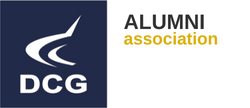If you think your online presence only matters when you’re job hunting, then maybe it’s time to reconsider. In today’s hybrid workplace, your digital reputation influences everything from promotion opportunities to professional partnerships. With AI tools now making it easier than ever for employers to analyse online profiles, managing your digital footprint has become a career-critical skill.
Your Digital Identity: More Than Social Media
Your digital footprint in 2025 extends far beyond Facebook posts and Twitter likes. It includes your LinkedIn activity, professional portfolio websites, comments on industry articles, video call backgrounds, email signatures, and even how you present yourself in virtual meetings. Every digital interaction contributes to how colleagues, clients, and potential employers perceive your professional brand.
The shift to remote and hybrid working has made this even more important. When face-to-face interactions are limited, your online presence often becomes the primary way people form impressions about your expertise and character.
What Employers Are Really Looking For
Modern employers aren’t just checking for embarrassing photos anymore. They’re looking for evidence of your professional competence, industry engagement, and cultural fit. This means:
- Thoughtful contributions to professional discussions
- Evidence of continuous learning and skill development
- Consistency between your claimed expertise and online activity
- Professional communication style across platforms
Pro Tip: Set up a Google Alert for your name to monitor what appears when people search for you online.
The AI Factor: Why This Matters More Now
AI-powered recruitment tools can now scan thousands of online profiles in minutes, analysing everything from writing style to professional networks. This technology can identify patterns and connections that human recruiters might miss, making your comprehensive digital presence more influential than ever.
Building Your Professional Digital Presence
Rather than just avoiding negatives, focus on creating a positive professional identity:
LinkedIn Strategy: Treat your LinkedIn profile as a living document. Share insights from your industry, comment thoughtfully on others’ posts, and showcase your expertise through articles or case studies.
Professional Consistency: Ensure your professional image is consistent across platforms. Use the same professional photo and similar bio information on LinkedIn, company websites, and professional portfolios.
Digital Portfolio: Create a simple website or online portfolio that showcases your work, particularly if you’re in a creative field or consulting role.
Managing Your Digital Footprint: A Monthly Audit
Make digital reputation management a regular habit:
- Search Yourself: Use different search engines and check image results
- Review Recent Activity: Look at your posts, comments, and shares from the past month
- Update Privacy Settings: Review settings on all platforms as they change frequently
- Professional Photo Check: Ensure your profile photos are current and professional
- Remove or Update: Address any outdated information or inappropriate content
Privacy Without Paranoia
You don’t need to live in fear of your digital footprint, but you do need to be strategic about it. Use privacy settings wisely, think before you post, and remember that even “private” content can become public.
Try This: Create a simple rule for yourself – would you be comfortable if your boss, client, or future employer saw this post? If not, don’t share it.
Looking Forward
Your digital reputation isn’t just about avoiding problems – it’s about creating opportunities, especially if you work in an industry where networking often happens online.
It’s been said that ‘the internet never forgets’, and with the right approach, you can make this work in your favour.
